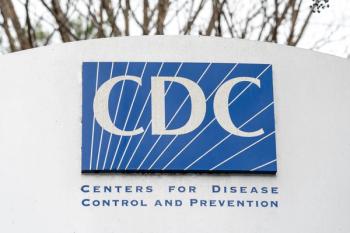
Enteric Zoster: Hidden Shingles Threat
Characterized by severe abdominal pain.
A diagnosis of herpes zoster (HZ) typically relies on the appearance of the classic blistering skin rash associated with the condition. Occasionally, however, there is no rash-a situation known as
The enteron is the medical term for the digestive tract, the tube that stretches from the mouth to the anus. Enteric zoster is a case of shingles that occurs at some point along that tube, including the esophagus, stomach, and small and large intestines.
Traditionally, the accepted teaching has been that the varicella zoster virus (VZV) reactivates only in sensory nerve cells located on the dorsal roots of spinal nerves and cranial nerves. “What we now know is that the virus also becomes latent in nerve cells in other regions of the body, the so-called autonomic nerves and the enteric nervous system,” says neurobiologist Michael Gershon, MD and professor in the Department of Pathology and Cell Biology at Columbia University’s Vagelos College of Physicians and Surgeons.
Trending:
Gershon and his wife, pediatrician Anne Gershon, MD, have researched and
“In the absence of rash, nobody ever suspected shingles,” explains Gershon.
To further complicate the diagnosis, while enteric zoster can occur on its own, it can also occur when the VZV reactivates in the dorsal root and cranial nerves. In those cases, the patient experiences abdominal pain simultaneously with the shingles rash.
Chronic, unexplained abdominal pain is the most common manifestation of enteric zoster. “Very old people or people who are immunocompromised can develop pseudo-obstruction… which can also occur as a result of varicella zoster reactivating in the gut,” Gershon says. “We’ve also seen it associated with
Read More:
Enteric zoster in unvaccinated adults is typically caused by the wild-type strain of VZV, according to Gershon. He has also diagnosed it in people who received only one dose of the chicken pox vaccine as children and then developed a modified chicken pox infection that went undiagnosed. In those cases, the wild-type virus replaced the vaccine virus when they developed shingles.
Severe pain and gastrointestinal involvement are dire signs of enteric zoster, so early diagnosis is critical. Definitive diagnosis is made through VZV DNA saliva testing. Once confirmed, enteric zoster usually responds well to a course of acyclovir.
Gershon says that many physicians have not been trained to recognize enteric zoster, so cases may go undiagnosed. He suggests that community pharmacists can play a role in identifying the condition, particularly if a patient complains to them of pain in their gut, by suggesting that they consult with their primary care provider and raise the possibility of enteric zoster.
Newsletter
Pharmacy practice is always changing. Stay ahead of the curve with the Drug Topics newsletter and get the latest drug information, industry trends, and patient care tips.






































































































































